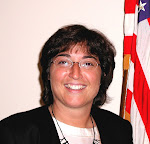


It was misty as we drove the hour in to Bucharest, through the flat farmlands. The soil looked very rich and the land was tilled and ready to be planted. Could that be correct? Tudor did not explain as much as the others and he and the driver apparently had some misunderstandings. PLUS there was a marathon in town so most of the streets in the area we wanted to tour were blocked off. We viewed most of the sites from afar. On the way to the Novotel, we had a slight fender bender when a car backed in to us. No damage on either car but a slight scare.
Their language is Latin based so I found I could understand more than I thought. The country was united in the 1600s under Michael the Brae. It got its name in 1859 at the end of the Russian/Turkish war when they elected a Prince as their ruler. In 1977-78, they had their War of Independence from the Ottoman (Turkish) empire. In 1918, some of the Austrian Hapsburg family members came to be the King/royal family for Romania.
There are 2M residents in Bucharest – approx. 10% of the population. 7% of the population are Hungarian living in the Transylvania region. Bucharest is called “Little Paris”. Several of the streets were patterned after Paris with wide avenues (8 lanes across!) and a structure similar to the Arch of Triumph.
Hitler wanted Romania’s oil. In 1947, after WWII, the country suffered a brain drain where there were no opportunities in the country. King Michael was forced to abdicate and the Russians were in control. Most of the apartment blocks and building reflect a Soviet influence – solid block of gray with no imagination or decoration. These are mostly in the suburbs approaching the city as the historical buildings in the city center were very decorative and ornate.
There is one statue representing their new found freedom – a triangular spike with a brain on the upper half stuck on the spike (quite strange, really). The guide said it nicely when he said, “It reminds us of a world where we were forced to live and a world where we want to live.” Time after time, on this trip, we, as Americans have been told how much our country has been looked up and envied. How they want to emulate our freedom and capitalism
We went first to the National Academy of Art. It is very large and they have a distinguished section of European and Romanian art. Across the street was an open air market with all kinds of fresh cheeses (some in a barrel so it looked like a tree stalk!), fresh sausages and meats, grape juice, vegetables and nougats, chocolates and the best – a string of fresh dough wound around a spindle about 12 inches long. Then it is rolled and placed over an open flame. After it is cooked, they roll the hot dough in sugar, cinnamon and walnuts!! You get it smoking hot and it was delicious! We wandered through the streets and found an Excalibur restaurant set in the medieval times, several other open air markets, and met some nice people as we kept getting lost.
The dictator Nicolae Ceausescu ruled for 25 years – nearly ruining the city’s splendor by replacing historic neighborhoods, grand boulevards and Ottoman ruins with concrete blocks and communist monuments. Thought he city is no longer the “Little Paris” it once was, life here is fascinating, frustrating and anything but boring.
There was a marathon benefiting hospice in the city. It began at the Parliamentary Palace – Palatul Parlamentului, the 2nd largest building in the world. It has 16 levels and 1100 rooms. Only the Pentagon in Washington, DC is larger. Buit in 1984, 20,000 laborers and 700 architects struggled to construct the so-called House of the People. It was completed in 1989, just in time for Ceausescu’s execution, the communist dictator. It now houses Romania’s Parliament. The street leading up the Palace was intentionally built three feet wider than Paris’ Champs Elysees as Ceausescu dreamed of recreating Bucharest in the image of a perfect socialist capital. To do so, he demolished over 9000 19th century houses and displaced more than 40,000 Romanians. We passed the University Library, the National Art Museum, the Senate Building (former Communist Party Headquarters where Ceausescu delivered his final speech) and the Architecture Institute. We walked through Cismigiu Gardens which had a small lake, a huge playground and free bike rentals. There were markets along the way and we had our own personal guides to lead us to the National Opera House. One man did several jobs – one was being a security officer to an 8-year old girl. He drove her to school every day and picked her up from school to take her to her swimming or sports lessons.
At the Opera House, we found we could not use a credit card and we did not have the RON currency needed. After asking several people, we met a nice recently married couple – she was born in VA and they had met at Chapel Hill. He is Romanian and they recently moved back to Romania so he could work and she is getting her doctorate degree in neurological biology. They bought our tickets for us and we paid hem in dollars - $2.50 each!! We had balcony seats and they were great. The whole theatre probably sat less than a 1000 people so it was not very steep. We had a wonderful view of the orchestra as they danced GISELLE, a wonderful ballet.
